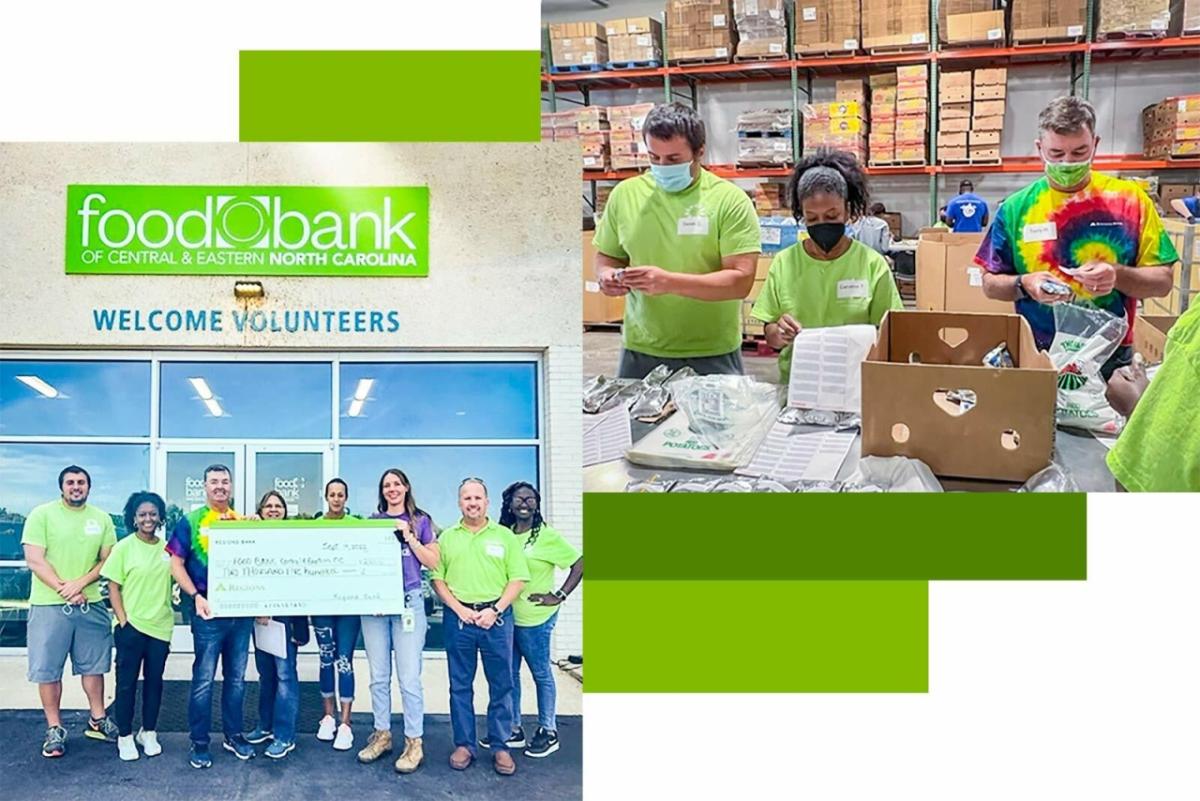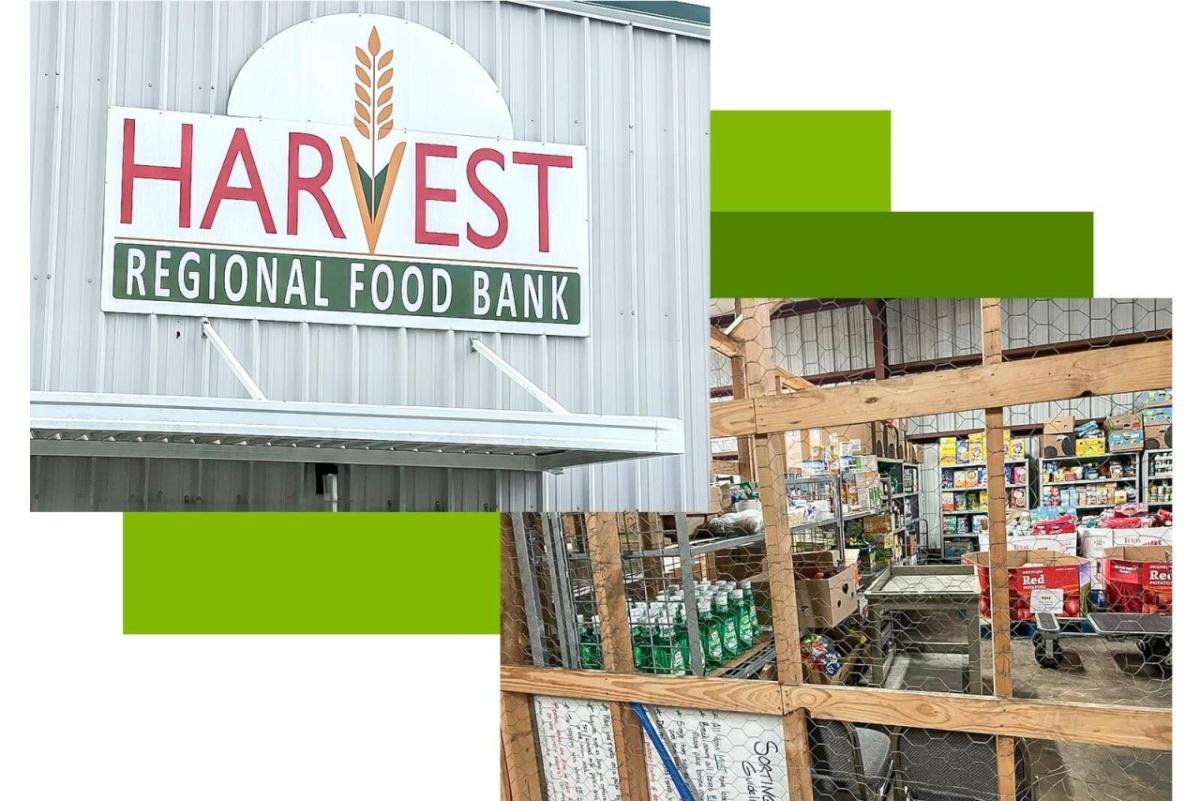Regions Helps the Helpers During Heightened Need
September is Hunger Action Month. See how Regions is lending its support to food banks addressing hunger relief while also facing inflated prices.
By Kim Borges
The hits just keep coming.
Increased demand. Fewer donations. Supply chain issues. Skyrocketing prices. All part of a recipe for disaster for the nation’s food banks.
Unless a key ingredient – community action – is added to the mix.
“The surge in grocery and gas prices – at the same time many COVID-19 programs and waivers are expiring – means a perfect storm of challenges for our food bank and for the people we serve each day,” said Jessica Whichard from the Food Bank of Central and Eastern North Carolina, a Feeding America affiliate. “We’ve expended about eight times our usual amount to purchase and distribute food, with our primary focus on shelf-stable items that are really hard to keep in place.”
Whichard and her teammates are not alone. A recent Feeding America survey found 90% of responding food banks working through an increased or steady demand for services amid the nation’s largest 12-month grocery price hike since 1979.
The Harvest Regional Food Bank in Texarkana, Arkansas, is one of them.
“Our pre-pandemic distribution hovered around 2.5 million meals annually and increased to over 5.5 million meals in 2020,” said Camille Coker Wrinkle, executive director and CEO of the fellow Feeding America affiliate. “Over the past couple of years, that number has leveled off to an estimated four million meals annually. We feel that’s the ‘new normal.’”
Regions Bank and its teams are doing their part to help during Hunger Action Month in September. Feeding America established Hunger Action Month in 2008 as a nationwide initiative encouraging people to become proactively involved with the hunger crisis.
Associates in Raleigh recently presented a $2,500 contribution to the Food Bank of Central and Eastern North Carolina, on top of volunteering in the food bank’s warehouse. Terry Hoey, Mid-East Mortgage production manager and market executive for Regions in Raleigh, believes supporting basic needs like hunger relief is especially critical.
“As we hopefully find ourselves on the other side of a global economic and health crisis, real challenges of housing instability and food insecurity continue to impact our Raleigh neighbors,” said Hoey. “Our business model as a company revolves around everyone pulling together to serve clients. That same ‘everyone pulling on the rope’ approach to volunteerism shows how we can also create a greater impact for people in our communities.”
Commercial Banking relationship specialist Cindy Forrester is a repeat volunteer. The chance to give back gives her a sense of fulfillment; it offers other benefits, too.
“When you volunteer, you get to meet new people and have fun with the associates you work with,” said Forrester. “We work hard, but we still have a lot of fun. I enjoy the camaraderie.”
Regions’ Texarkana market is presenting Harvest Regional Food Bank with a $2,500 donation. The affiliate serves people and families in nine counties across Southwest Arkansas and in Bowie County, Texas, many in rural and underserved areas.
“We know that one in every five of our neighbors in Southwest Arkansas and Northeast Texas was facing food insecurity prior to 2020, meaning they didn’t have adequate and reliable access to healthy food,” said Clay Roberts, market executive for Regions Bank in Texarkana. “For 25-plus years, the Harvest Regional Food Bank has been distributing millions of pounds of food among dozens of food pantries, shelters and schools. They’ve been compassionate, good neighbors, and we’re honored to be good neighbors to them in return.”
While the unrelenting challenges since 2020 could be perceived as gloom and doom, it’s anything but according to both affiliates. Each has uncovered new ways to approach serving clients. Ways they anticipate will continue.
“The drastic and sudden changes to the way we provided hunger relief actually provided us with a good opportunity to evaluate what worked well and how we could incorporate those changes into our long-term plans,” said Wrinkle.
That includes continuing a drive-through model of food distribution at select sites; working with more senior centers to provide food boxes to their clients since transportation can be a barrier; and implementing health care partnerships to provide on-site pantry services, particularly for those who face chronic conditions like diabetes and hypertension.
“The big ‘aha moment’ for us was leveraging some of the new partnerships formed out of COVID to provide hunger relief to people in the places they will most likely be,” explained Wrinkle.
Jessica Whichard says the same is true in serving their North Carolina clients.
“Home delivery of our senior boxes has been really effective, and we’re exploring ways to continue providing that,” she said. “We also gained efficiencies by pre-ordering, pulling and loading food for our community agency partners. We’re very fortunate to be in a place to have funds available to shift and remain nimble in how we can get food out the door while strengthening our programs to actually end hunger.”
The challenges may be greater. But so is the resolve. Especially when more people in the community step up.






